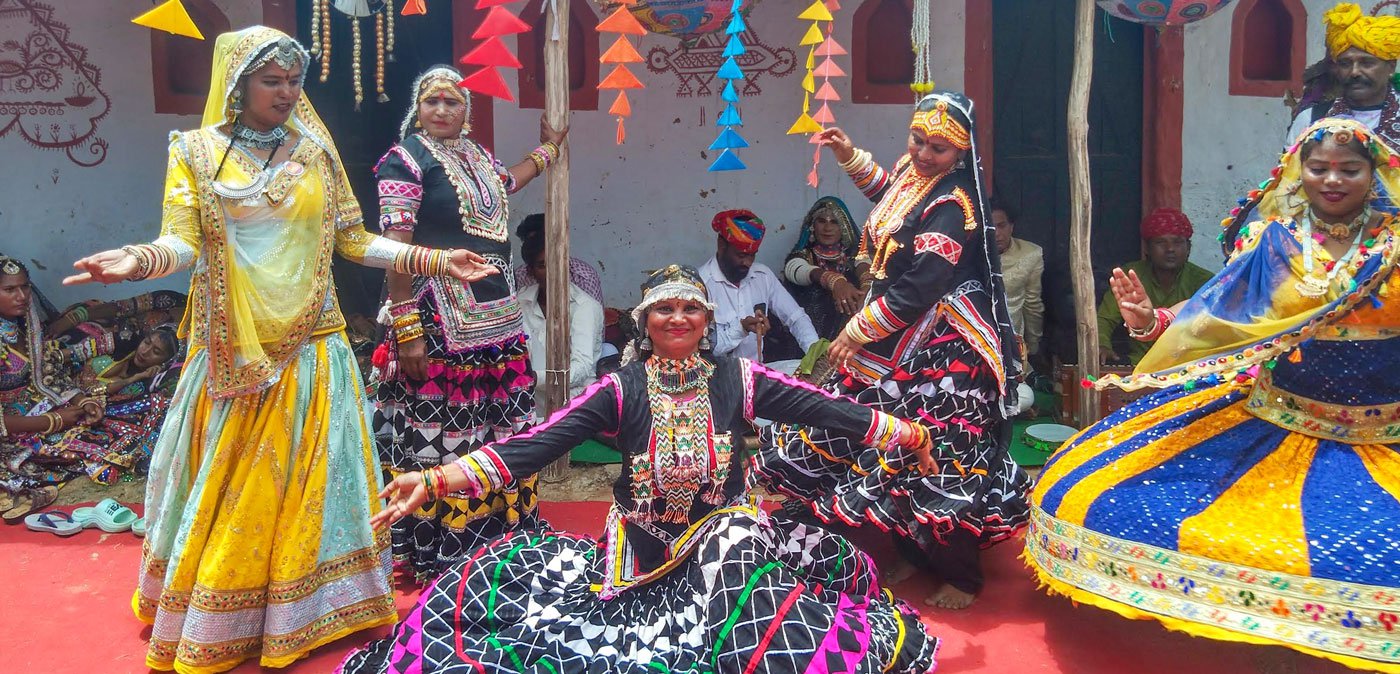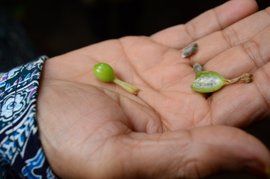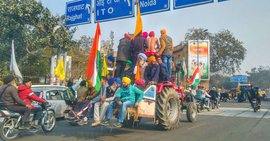“Mobiles, TV, video games have come in and the historical tradition of puppetry and storytelling is being lost.” Pooran Bhat is a puppetry artist from Danta Ramgarh in Sikar district of Rajasthan. The 30-year-old recalls a time when they made their own puppets and performed skits at children’s parties, wedding occasions, and government functions.
“Today people want different activities. Earlier, women used to sing on the dholak but now people want film songs on the harmonium. If we get patronage, we’ll be able to carry forward what our forefathers taught us,” he says.
Bhat was at Jaipur’s Jawahar Kala Kendra – a three-decade old multi-arts centre – in August this year (2023). Several groups of folk artists from across Rajasthan had congregated for this state-sponsored festival where the state government announced a new scheme for performing artists struggling to hold on to their art and livelihood.
Called the Mukhyamantri Lok Kalakar Protsahan Yojana, it guarantees 100 days of annual work for every folk artist family in their location at Rs. 500 a day. The National Rural Employment Guarantee Act 2005, which ensured 100 days of employment to rural households, set a precedent for it.
The central government’s Vishwakarma Yojana was announced in September 2023 for artisans and craftspeople, but this scheme – Kalakar Yojana – is a first for performing arts communities such as Kalbelia, Terah Tali, Bahrupia, and several others. Activists estimate there are about 1-2 lakh folk artists in Rajasthan and no one has ever done a total count. The scheme also brings gig workers (transport and delivery) and street vendors into the social security net.
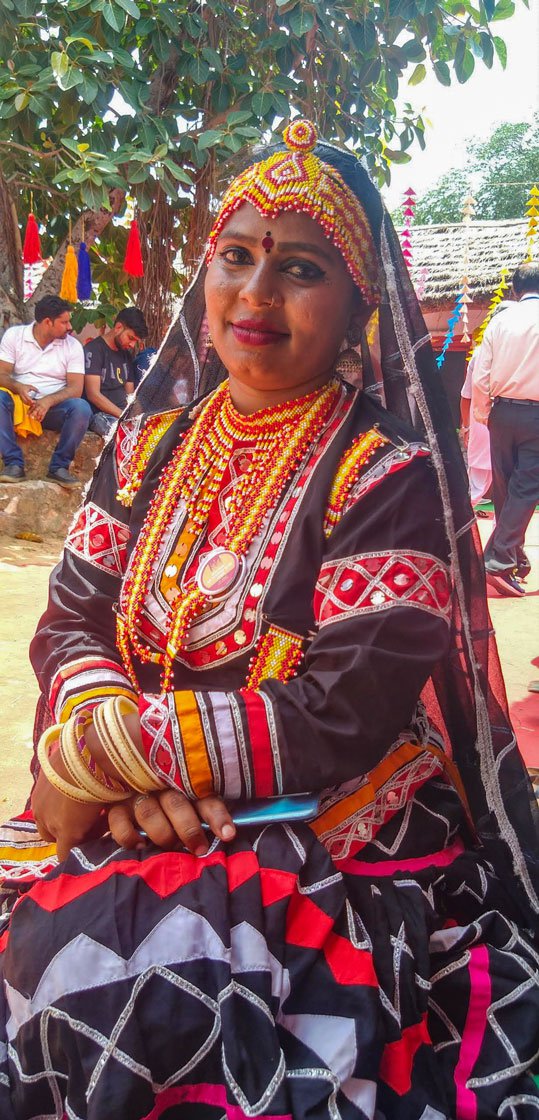
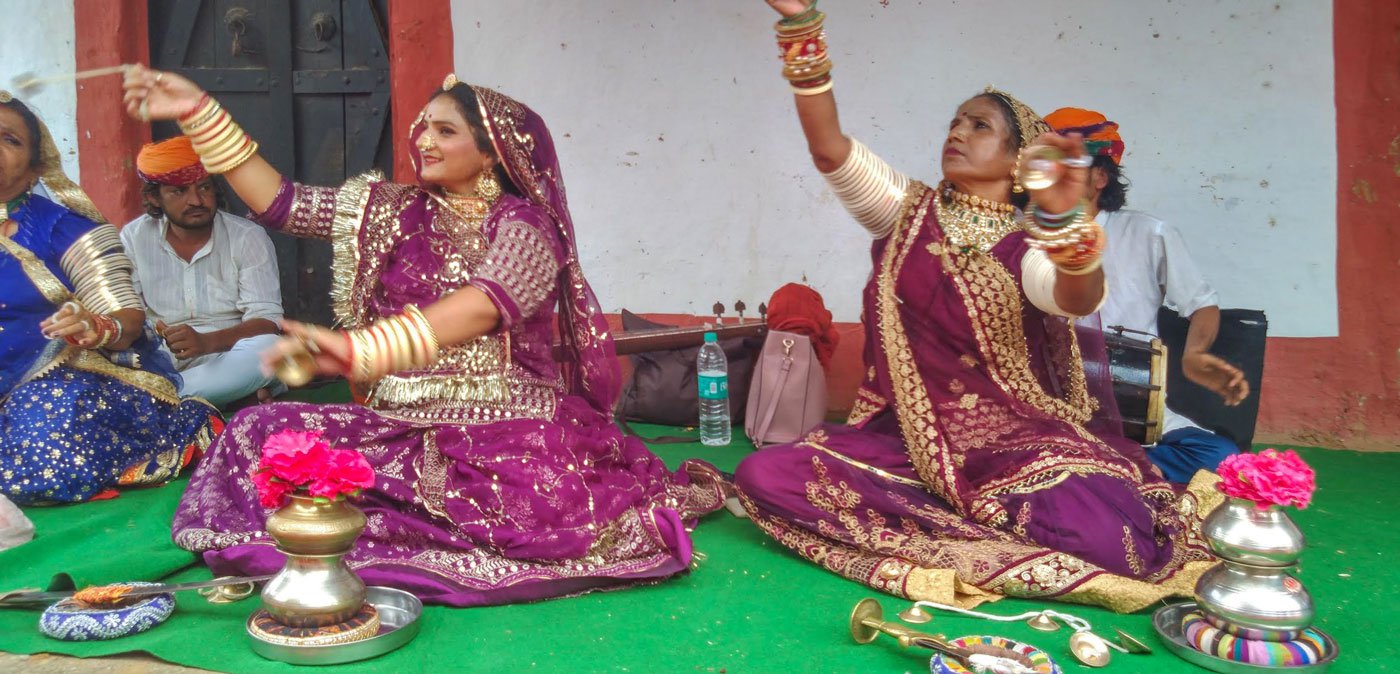
Left: Artist Lakshmi Sapera at a gathering of performing folk artists in Jaipur. Right: A family from the Kamad community performing the Terah Tali folk dance. Artists, Pooja Kamad (left) and her mother are from Padarla village in Pali district of Jodhpur, Rajasthan


Left: Puppeteers
from the Bhaat community in Danta Ramgarh, Sikar district of Rajasthan performing in Jaipur in August 2023. Right: A group of performing musicians:
masak
(bagpipe),
sarangi
(bow
string),
chimta
(percussion) and
dafli
(bass hand drum)
“We are only active in the wedding season for a few months, but the rest of the year we just sit at home. In this [scheme], we hope to earn regularly,” says Lakshmi Sapera. While the 28-year-old Kalbelia performer from Mahlan village near Jaipur is hopeful, she adds, “unless my children want to, I won’t force them into the family art. It’s better if they study and get jobs.”
“Folk artists – the ‘living arts and crafts of the state’ – were the worst hit especially in 2021 [pandemic]. They needed a helping hand, else they would have left their art and ended up as NREGA workers,” says Gayatri A. Rathore, Director General of the Jawahar Kala Kendra. During covid-19, all performances stopped overnight, leaving the artists at the mercy of handouts.
“In the pandemic, our earnings went down. With this artist card, it should get better,” says Pooja Kamad. The 26-year-old is a Terah Tali performer from Padarla village, Pali district, Jodhpur.
“In folk music such as Manganiyar [old communities of musicians in western Rajasthan], only one per cent of the artists get to go abroad and perform and earn; 99 per cent don’t get anything,” says Mukesh Goswami. Among the Kalbelia (nomadic groups earlier known as snake charmers and dancers), some chosen 50 people get work while the rest don't.
'In the pandemic, our earnings went down. With this artist card, it should get better,' says Pooja Kamad, a Terah Tali performer from Padarla village in Pali district
Goswami is an activist with the Mazdoor Kisan Shakti Sangathan (MKSS). He adds, “there has never been year-long employment for folk artists…important for livelihoods and a sense of dignity.” MKSS is a people’s organisation working for the empowerment of workers and peasants in central Rajasthan since 1990.
Marginalised artists should get social security, basic livelihood from the government so they don’t have to migrate to other cities. “ Mazdoori bhi kala hai [labour is also art],” Goswami points out.
Under the new scheme they get an ID that identifies them as artists. They are eligible to perform at government functions and the money earned is credited to their account after the local sarpanch verifies details.
“ Hum Bahurupi roop badalte hain ,” says Akram Khan, in reference to his traditional performing art of Bahurupi where the actors move between multiple religious and mythological roles. The art is said to have originated in Rajasthan and travelled to Nepal and Bangladesh. “Historically, patrons would tell us to come as different animals [for their entertainment] and in return gave food, land, took care of us,” he says.
Khan estimates that there are just 10,000
performers like him left today in this art form in which both Hindu and Muslim
communities participate.


Left: The Khan brothers, Akram (left), Feroze (right) and Salim (middle) are Bahurupi artists from Bandikui in Dausa district of Rajasthan. Right: Bahurupi artists enact multiple religious and mythological roles, and in this art form both Hindu and Muslim communities participate


Left:
Members of the Bhopas community playing Ravanhatta (stringed instrument) at the folk artists'
mela
. Right:
Langa artists playing the
surinda
(string instrument) and the
been
. Less than five artists left in
Rajasthan who can play the
surinda
“It [the scheme] should be made into a law, so that even if the government changes, the work guarantee is ensured,” says Shweta Rao, an MKSS activist. She says that instead of the 100 days of work guarantee per family, it should be 100 days per artist. “The actual artist who needs it – performing somewhere within the jajmani [patronage] system inside a remote village – needs to be connected and benefitted.”
Between May and August 2023, some 13,000-14,000 artists applied for this new scheme. Till August, 3,000 got approved and after the festival, the number of applicants went up to 20,000-25,000.
Each artist family is also being given Rs 5,000 as a one-time amount to buy their instrument. “We have to now chalk out a calendar of events because art and culture doesn’t have a presence in the artists’ own districts, and get them to disseminate government messages using their art forms and their local language,” says Rathore.
There is also a demand for an institute for performing folk arts where senior artists share their knowledge within and outside the community. This will help preserve and archive the work of artists and ensure that knowledge is not lost.